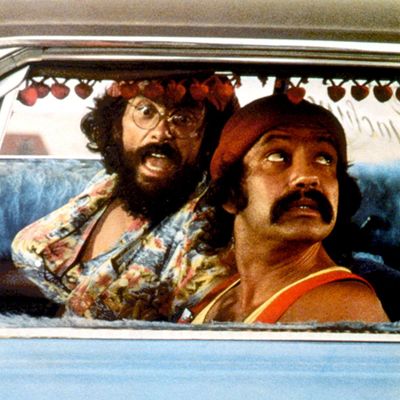
In yesterday’s column, Maureen Dowd chronicles how she wound up “curled up in a hallucinatory state” for eight hours after eating a cannabis-infused caramel chocolate bar.
She writes:
I was panting and paranoid, sure that when the room-service waiter knocked and I didn’t answer, he’d call the police and have me arrested for being unable to handle my candy.
I strained to remember where I was or even what I was wearing, touching my green corduroy jeans and staring at the exposed-brick wall. As my paranoia deepened, I became convinced that I had died and no one was telling me.
It’s easy to laugh at the ridiculousness of this (and, sure enough, that’s what Twitter did), but Dowd’s bad trip also provides a useful primer for safe drug use. Because while it’s obvious that better marijuana-product labeling might have helped — and Colorado’s new laws will surely soon require that — she failed to take even the most basic measures to protect herself.
For one thing, most drug users would never buy a drug that they don’t know how to dose and then take it while alone in an unfamiliar setting without doing any background research or talking with sellers or other users about what to expect. Dowd writes that she first tried a small amount and then, when there was no immediate effect, rapidly “nibbled” more. This is a recipe for overdose by ignorance: A basic principle of pharmacology is that drugs that are eaten take effect far more slowly than those that are snorted, smoked, or injected. This means that feeling nothing at first means nothing about what to expect later.
A Google search for the time of onset for marijuana eaten in foods like chocolates or brownies brings up the extremely useful site Erowid, which documents drug experiences. Here we find that the drug can take between half an hour and two whole hours to take full effect — it makes sense that it would have to pass through at least some of the GI system before it could possibly get to the brain.
But Dowd didn’t bother to look into any of this; instead, she increased the dose before she had any sense of what effect a low dose would have. As it turns out, the higher the dose, the longer-acting edible marijuana is and the stronger the experience of paranoia and hallucinations can be.
The second mistake she made beyond failing to learn about proper dosing and time of onset was to eat the chocolate alone in a setting that wasn’t safe- and familiar-seeming. While acid guru Timothy Leary made many destructive claims, he did contribute the extremely useful idea of the impact of “set and setting” on drug experience to psychopharmacology. “Set” means the person’s background, emotional state, and expectations of the drug, while “setting” means the social and physical environment.
Set and setting profoundly affect your high: Drinking Champagne during your wedding toast is a quite different experience from drinking it at home alone on New Year’s Eve after a divorce. This is why the CIA — having surreptitiously dosed people with LSD and then interviewed them while they were in the grips of terrifying, unexpected hallucination — thought that LSD primarily caused paranoia and fear, while the hippies experienced peace and love. Set and setting of use change everything: Drugs interact with your brain chemistry and your brain chemistry is affected by your emotions, your stress levels, your physical environment, and the people around you.
Fortunately for Dowd, it’s very hard for marijuana freak-outs or overconsumption to do lasting damage. Yes, in rare cases pot use by people with preexisting psychological conditions can push them over the edge, but in general, the worst-case outcome of a situation like Dowd’s is an embarrassing, panicky phone call (or column) or two.
So let Dowd’s column be not just hilarious social-media fodder, but also a lesson: If you want to have a bad experience with edible marijuana, then take it alone, in a place that doesn’t give you a feeling of safety and comfort — or in a socially difficult situation like a job interview or exam. If, on the other hand, you want to get high in an enjoyable way, know your dose, know the average time of onset, start low, go slow, and surround yourself with trusted friends in a calm, safe, familiar place.
And if you are a New York Times columnist who wants to enter the national debate on marijuana, don’t set yourself up for a bad trip and then imply that your experience should affect public policy.




